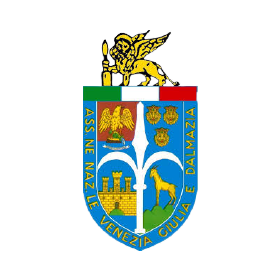“Dei Lincei” Academy of Sciences and the Dalmatian Historical Society
“A Pilgrims’ and Travellers’ Dalmatia”
A convention in Rome brings to life the chronicles of pilgrims and ambassadors who travelled to the east coast of the Adriatic from the 15th to the 17th centuries
Rome. A sea travelled constantly by all kinds of travellers, by pilgrims, merchants, ambassadors, and scouts, despite dangerous storms, treacherous navigation, pirates and illness. From the 1400’s to the 1800’s, Venice, the master of its “Gulf”, had a shipping monopoly for the Holy Land, destination of pilgrims from all of Europe. Venice created a veritable “shipping line”, precisely regulated in terms of schedule, formalities, stopping points, and cost. Experts have calculated that this “service” alone yielded an income for Venice’s treasury comparable to the total annual revenue of a large city such as Verona.
Aboard the galley, a pilgrim was typically assigned a seat according to his means (what we would refer to as first, second, and above all third class) To avoid confusion, Venice did not allow any combining of merchant and pilgrim cargoes. And both kinds were, naturally, subject to changes in wind and weather, the perils of navigation, and the assaults of pirates.
Chapters of history, ancient and modern, were revisited by Italian and foreign experts in the convention held on May 22nd and 23rd , promoted by the “Dei Lincei” Academy of Sciences and the Dalmatian Historical Society, and titled “Dalmatia as Chronicled by Travellers and Pilgrims from Venice from the 15th to the 17th Centuries”. Those chronicles and diaries were unlimited fonts, published by travellers and pilgrims who saw themselves transformed into authors of guides for other aspiring adventurers. There was a wealth of information regarding the exotic national costumes found on the Dalmatian coast and Venetian Albania, the quality, or lack thereof, of culture, the more dangerous currents for navigation, profiles of the cities and islands encountered, and the variety of local idioms heard. A true mare magnum, in which a traveller could happily lose himself, for profit and amusement. The scholars who spoke at the convention supplied plenty of “anchors”, useful to avoid drowning in the vast sea of information furnished in the many editions that appeared above all in the 16th Century.
Among the many published works, one of particular note was “The Circumnavigation of Dalmatia” by Leonardo Donà (1595), presented by Marcella Ferracciolo and Gianfranco Giraudo. A Venetian diplomat, an acute observer of people and places, Donà not only describes, with great wealth of detail, the cities he saw during his tour and the personalities of the various classes – above all, the nobility – but he also furnishes a kind of self portrait of the authentic Venetian patrician of his time, used to shrewed thriftiness and not given to ostentatious displays of luxury: for example, he feels it important to emphasize that the clothing he will be donning for diplomatic affairs during the trip is precisely numbered and has been brought from home.
Zara, Traù, Curzola, Lesina and Ragusa are only a few of the places visited by Donà. In Curzola, he notes the production of wine and pottery; in Lesina he observes the “pride” of the nobile class and its rather miserable conditions; in Ragusa – we remember that Donà was Venetian – he sings the praises of the city’s defenses and the liveliness of its people and commerce.
Worthy of note was Rita Tolomeo’s speech on “Pirates and Tempests on the Voyage towards Dalmatia”, which we cited earlier. Pilgrimages were long:. It took at least a month and a half to reach the Holy Land, and as long as two months to arrive back in Venice. It was prefereable for the ships to take coastal route rather than risk open waters, especially since there often blew winds so strong that a ship could be pushed close to the shores of Puglia in southern Italy. At times, for pilgrims of lesser means, substandard ships were used, which were untrustworthy to begin with, but were also loaded far above capacity. In any situation, it was recommended to make out a last will and testament before boarding: this recommendation was made more fervently as time went on, given the proliferation of piracy, especially Turkish, in the Adriatic, and the loss on Venice’s part of several key bases. The fall of Rhodes and the expansion of the Ottoman Empire would later bring a crisis situation to the entire Holy Land navigation service.
The Battle of Lepanto of 1571, in which Venice lost, according to reliable sources, 4,800 “League” members, lessened the number of pirate raids but, according to Professor Tolomeo, also launched Venice in a war without fronts against plunderers, from Istria to the Greek coasts. The “Uskoks” were particularly warlike and well-organized. These were Bosnians who had fled the Turkish advance in the Balkans and were protected by the Habsburgs as a defense against Venice, and who were so effective that, by the 17th Century, Venice saw the need to equip its ships with artillery. Pilgrimages to the Holy Land by sea became more and more dangerous, to the point that ancient land routes became popular once more, and Rome began to be preferred over Palestine.
Milovan Pavic’s presentation, Dalmatia in 16th Century Italian Travel Books, and particularly the engravings from his sources, were of great interest and very competently discussed; Smiljka Malinar’s Ragusa in the Descriptions of Italian Travellers of the 16th and 17th Centuries was a scholarly examination of many existing texts, from which emerged the diverse origins of the pilgrims: obviously they were not only fromVenice and Italy. The pious travellers were asked to bring along two bags: one full of money, and the other, of patience. This is only fitting: a pilgrimage was an expression of devotion and contrition, and money did, indeed, have to be spent, if the pilgrim hoped to return.
Patrizia C. Hansen
(traduzione di Lorie Ballarin)




